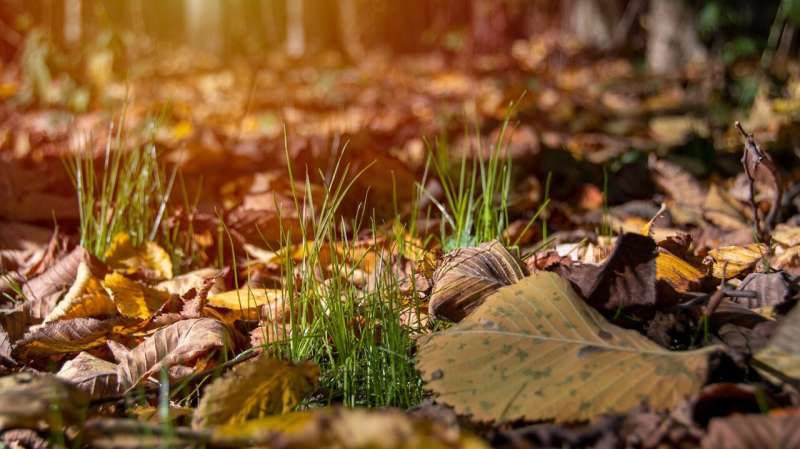This article has been reviewed according to Science X's editorial process and policies. Editors have highlighted the following attributes while ensuring the content's credibility:
fact-checked
peer-reviewed publication
proofread
Letting those leaves pile up? New research shows leaf litter contains persistent free radicals

Research led by environmental health sciences (ENHS) associate professor Eric Vejerano has found that leaves are a source of biogenic persistent free radicals (BPFRs). Vejerano and Ph.D. in ENHS alumna Jeonghyeon Ahn published their findings in Environmental Science & Technology Letters.
"We found that both coniferous and broadleaf plants contained substantial levels of persistent free radicals," he says. "This suggests that the vast amount and perpetual supply of leaf litter is an unaccounted source of persistent free radicals that, if toxic, may have negative health impacts when inhaled or ingested."
As an atmospheric/air quality scientist, Vejerano's work focuses on environmental pollutants, particularly those with the potential to be airborne. He specializes in studying and tracking environmentally persistent free radicals (EPFRs)—a class of pollutants that can remain in the environment for hours or even months, sometimes traveling long distances and capable of causing adverse impacts to human and environmental health.
In his lab at the South Carolina SmartState Center for Environmental Nanoscience and Risk, Vejerano and his team look at the EPFRs that are created by human activities, such as manufacturing and driving gasoline-powered vehicles. They also study naturally-occurring, or biogenic persistent free radicals (BPFR), including forest fires.
With this latest study, leaf litter can be added to the list of BPFRs.
Though EPFRs and their environmental/health risks have been studied extensively in the decades since they were discovered in 1954, most research has focused on those resulting from combustion and thermal processes. With this study, Vejerano and his team turned their attention to naturally-occurring materials, looking to see whether BPFRs can develop and stabilize in leaves.
In addition to looking at different types of plants, they also assessed the presence of BPFRs in live and decaying leaves as well as their persistence through multiple wet and dry cycles. The BPFR levels not only persisted but increased throughout the wet/dry cycles.
"With 82 percent of the Earth's land biomass comprised of plants, the presence of BPFRs in leaf litter has significant implications," Vejerano says. "When contained in leaves, BPFRs pose no health threats. However, when leaf litter eventually disintegrates, BPFRs can be absorbed into and then dispersed, where they can create potential hazards for human and environmental health."
More information: Eric P. Vejerano et al, Leaves are a Source of Biogenic Persistent Free Radicals, Environmental Science & Technology Letters (2023). DOI: 10.1021/acs.estlett.3c00277
Journal information: Environmental Science & Technology Letters
Provided by Arnold School of Public Health





















